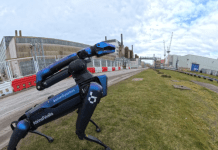Tate Consulting discusses the top five challenges the construction and engineering sector currently faces and how smart technology is evolving to help solve these issues
Developments in smart technology
Whilst new digital technology like BIM is changing the way we operate, the speed of innovation and implementation can be slow within teams that aren’t used to the idiosyncrasies of drawing in 3D compared with traditional 2D methods. The industry makes greater use of offsite construction methods such as pod bathrooms, offsite manufactured services cupboards and whole building offsite methods, there can be difficulties in front loading design processes to accommodate these techniques at an early stage.
The use of smart technology is constantly evolving and therefore our knowledge and implementation need to keep up. Smart Buildings can present real opportunities for the client to optimise the planning, usage and help them to manage the building more intelligently in order to make it more efficient, better maintained, improve living, working and leisure environments and to create a unique building experience tailored to individual needs.
But technology developments within our sector are still largely a new and unfamiliar inclusion to the majority of contractors, so there is a requirement for educating contractors and clients of the benefits, disadvantages and realistic limitations of smart technology systems. Also, managing expectations is still difficult as some clients are generally unaware of exactly what they want to achieve and require detailed guidance on the best use of available technology.
The key to successfully implementing smart technology is to discuss and understand the client’s needs and help to educate them on how this can be achieved. It’s important to remember that innovation and technology won’t succeed if they don’t fulfil the clients’ needs, smart technology is only a means to an end and while initial interest in a new product may initially peek the client’s interest, it will soon become a fad if they are stuck with a white elephant which offers little in the way of return.
Offsite construction
There are often difficulties in adopting offsite construction methods although they are shown to be quicker for the contractor with less waste and associated carbon emissions compared with traditional building techniques.
However, for the greatest value and cost efficiency to be achieved, buildings need to be designed from an early stage for offsite construction rather than late in the process after the main contractor appointment.
Payment terms for subcontractors
Another on-going problem within our industry is payment in terms of subcontractors. Most people will have seen the recent news headlines and social media posts that went viral after a mini-digger operator was filmed destroying the entrance to a new hotel in Liverpool – on the day it was due to be completed – allegedly because he had not been paid.
This is not a scenario anyone within the industry wants to see but also not really a surprising one as it’s often the smaller firms and individuals who suffer. A good example of this was the demise of Carillion last year. Lessons need to be learnt from these mistakes by enforcing fair payment policy and legislation.
BREEAM regulatory changes
The new revisions to The BS 7671 wiring regulations and the new BREEAM standards are now in effect, and whilst the changes are generally not too dramatic at these early stages there is still a lot of grey areas around their interpretation which will need clarifying and amending over the coming years.
With the restructure of the BREEAM New Construction in particular we are now having to target a number of key criteria earlier in the project, which puts more onus on the client to involve a BREEAM advisor/consultant at the early stages of development. This is to prevent credits being missed and the need to then chase more difficult/costly credits later in the project.
Also, as these amendments are new it is yet to be seen how the audit process will interpret the changes in evidence requirements. Therefore, assessors will have to be stricter whilst they get used to what will and won’t be accepted.
Staff retention and shortage in construction
One of the major challenges within engineering is staff shortage and disappointingly it’s still much more a male-orientated role with just 12% of engineers being women, something the industry needs to actively help change. More needs to be done to educate young people on the marketability and benefits of a career in engineering, but for real change to happen this problem needs to be tackled within early education to push science, technology, engineering and mathematics (STEM) industries.
Retaining staff within construction and engineering is a constant headache and as a younger new breed enters our industry we need to acknowledge that we need to adapt a new approach in welcoming them and offering the same benefits and perks they’d receive within other industry sectors.
Managing Director
jeff.bearcroft@tateconsulting.eu














